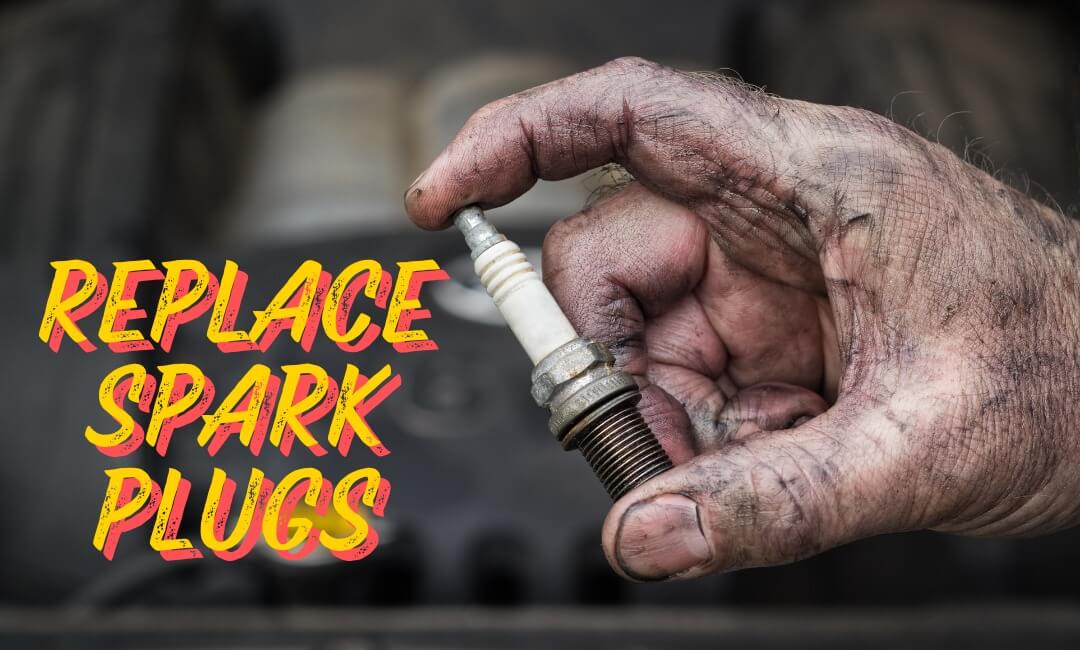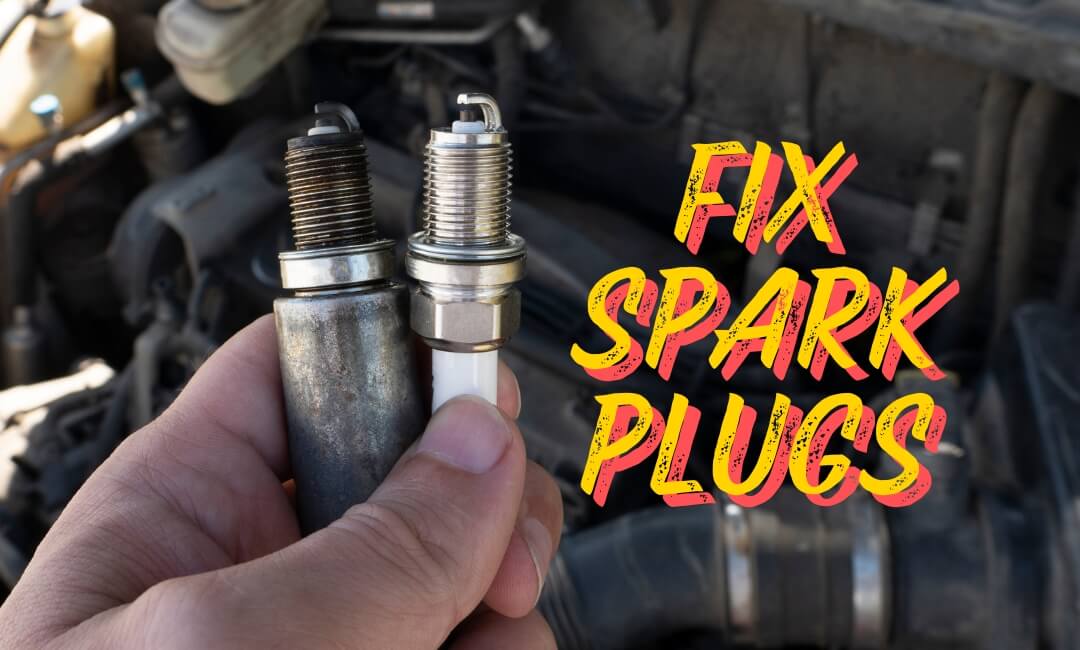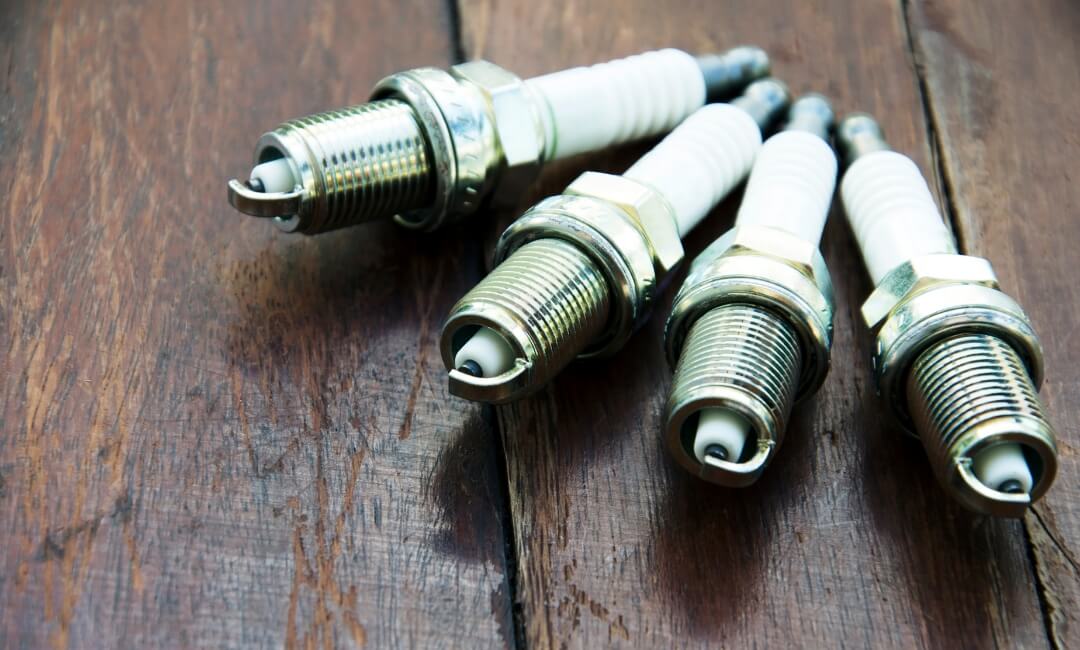If your vehicle shows engine misfires, low fuel efficiency, slow acceleration, and a jerky idle, it may be a sign that your spark plugs are worn or fouled. They need attention to improve your drive.
Sparkplugs play an important role in starting the combustion process of the air-fuel mixture to power your car, but with time and repeated use, they can wear out and work sluggishly.
Let’s learn how you can fix spark plugs and what more there is to know to keep your drive safe and comfortable.
Must Check: How Much Will Ignition Coil Replacement Cost You?
What Are Spark Plugs?
Spark plugs are a tiny but major part of your car’s engine and its internal combustion process. They are responsible for initiating the spark required to burn the air-fuel mixture in the engine’s cylinders. Which is one of the major processes of working engines.
Hence, with damaged and worn-out spark plugs, the vehicle will automatically slow down in functioning.
These plugs are made of durable metals like copper, platinum, and iridium. They withstand the high temperatures and pressures within the engine. But still, plugs become worn and are needed to be maintained and replaced if needed.
Issues with spark plugs
Why do spark plugs fail over time, being such a key part? They are made to high standards to work well for a long time. But they still have some issues.
Worn-Out Spark Plugs
Spark plugs’ electrodes endure relentless sparking and heat, gradually eroding over time. This wear leads to engine troubles: sluggish performance, wasted fuel, and heightened emissions. As these crucial components degrade, your vehicle’s efficiency and environmental impact suffer in tandem.
Fouled spark plugs
As engine parts are in contact with oil, carbon, or fuel deposits, these plugs are too, and eventually plugs get clogged, creating issues including an overly rich air-fuel mixture, leaking valve seals, or worn piston rings.
Damaged spark plugs
External factors can damage spark plugs. These include overheating, improper installation, or defects. A cracked spark plug can lead to misfires and poor engine performance.
How Long Does It Take to Replace Spark Plugs?

Time for replacement can be affected by factors like:
Type of vehicle
As the spark plug is part of the engine, the make and model of your car’s engine and the car itself are important in defining the replacement time. V6 and V8 engines have more cylinders. This takes more time. Their complex design makes the spark plugs hard to reach. It delays the process.
Experience level:
Replacement time can be varied depending on if you are a novice, a DIY expert, or a professional mechanic. Based on the role, the familiarity and knowledge about the vehicle, its engine, and the engine’s parts change. If you know more, time will be reduced if you know fewer processing delays.
Accessibility:
Positioning the spark plug can make it easily accessible and replaceable. In some engines, the spark plug is situated at an easy spot, while in others they may be buried under the intake manifold or other components, requiring additional time and effort to reach them.
After knowing about these factors, you might want to try it yourself and As changing spark plugs is a clear-cut method and can be done with basic knowledge and proper tools.
Here’s a step-by-step guide:
1. Gather your tools:
You need a spark plug socket, ratchet, extension bar, new spark plugs, and anti-seize compound. A torque wrench can help tighten the spark plugs to the correct specs.
2. Ready your vehicle:
In order to start, first cool down the engine to prevent burns, then disconnect the battery to avoid accidental shorts or sparks. Lastly, remove other parts that are in your way to reach the spark plug, such as engine covers or air intake ducts if needed.
3. Remove old spark plug:
Disconnect your plug from plug wires and ignition coils carefully by pulling them straight out of the plug. then to remove old spark plugs, use the spark plug socket and ratchet. Remember to be careful and not drop any debris into the cylinder after the plug removal.
4. Install a new spark plug:
On the threads of the new spark plug, apply a small amount of anti-seize compound. This will prevent it from getting stuck in the cylinder head. To avoid cross-threading, use your hands to thread the new plug into the cylinder. Now, tighten the plug with a torque wrench to the manufacturer’s recommended torque.
5. Reinstall parts:
After the new plug installation, reattach the ignition coils and spark plug wires. Confirm that each connection is secure to prevent misfires.
6. Test the engine:
Lastly, reconnect your battery and check the smooth run of the engine by starting it. Take note if any irregularities, such as misfires or rough idling, happen, as it indicates some problem in the process of installing a new plug.
How long does it take to change spark plugs?
In general, replacing a spark plug takes about 1 to 2 hours if you do it yourself, which can be influenced by things like experience level, engine complexity, and the absence of tools. But if you are hesitant and take your vehicle to a professional mechanic, the same process can be completed within 30 minutes to an hour as they have proper knowledge of engines, expertise, and tools.
How Long Does It Take to Fix Spark Plugs?

Usual fixes for spark plugs
Replacement is not the only issue. Sometimes you can just do some fixes to your spark plug and use it. given are common plug fixes:
Cleaning and regapping:
If the spark plug is just clogged with dirt and oil, cleaning it can fix your vehicle’s performance. With time, the gap between electrodes widens, decreasing spark quality. Re-gapping the electrodes to manufacture the mentioned gap can restore the spark quality.
Replacing spark plug wires or coils:
Sometimes the spark plug may be intact, but still problems are in vehicle performance. Check other ignition system components, like spark plug wires or coils; replacing them is also necessary, as these components also get worn with time.
As you know, how long does a spark plug replacement take and how to replace a spark plug? Knowing how to fix a spark plug is also important.
Step-by-step Guide to Fixing Spark Plugs
With minor issues, spark plugs can be easily fixed by following this guide:
1. Gather your tools:
You need a wire brush, a spark plug gap tool, and possibly replacement wires or coils if needed. For cleaning stubborn deposits of oil and dirt, a small file can be useful.
2. Inspect spark plugs:
Remove the spark plug and look for the signs of wear and tear, like fouling or damage. inspect for deposits and visibly wide gaps between electrodes.
3. Clean spark plugs:
For removing carbon, oil, or fuel deposits from the spark plugs, use a wire brush. Remember not to be harsh while cleaning and to avoid damage to electrodes. If the plug is clogged, heavily replace it.
4. Re-gap plug:
If the gap is widening between electrodes, use the gap tool and adjust the gap to the manufacturer’s specifications. This will ensure optimal spark performance.
5. Replace wires or coils:
If the ignition system’s other parts—spark plug wires or ignition coils—are damaged, replace them. as worn and faulty parts can result in no spark or weak spark, leading to misfires.
6. Reinstall spark plugs:
After a thorough inspection, cleaning, and re-gapping, reinstall the plugs. Use the same steps as in the replacement guide. Reconnect everything before testing the engine again.
How long does spark plug fixing take?
Generally, fixing the spark plugs takes around 30 minutes to an hour considering you are doing it yourself. But what you are fixing can influence the process, as cleaning and regapping take less time than replacing wires and coils. And if you are more comfortable with professional services, they can do the fix in 30 minutes as they have the required tool set and expertise.
Tips for maintenance of spark plugs

Regular inspection and maintenance
Frequency:
Regulating checks can help to catch the problem before leading to a major problem. Also, it is advisable to inspect your spark plugs as recommended by your vehicle’s manufacturer or after every 30,000 miles.
Sign of wear:
Engine misfires, poor fuel economy, and rough idling are signs that your engine needs attention. It’s time to check your spark plugs.
Choosing the right spark plugs
Types:
Spark plugs are made up of different materials, including copper, platinum, and iridium. Copper plugs are often the least expensive but wear out more quickly. Platinum and iridium plugs last longer and provide better performance, making them expensive but a good investment.
Selection:
Choose spark plugs that match your vehicle’s specs. The wrong ones can hurt performance and damage the engine.
FAQs
When should be spark plugs replaced usually?
Swap spark plugs at intervals ranging from 30,000 to 100,000 miles, based on type and maker’s guidance. Copper plugs need more frequent changes, while iridium and platinum varieties offer extended lifespans. Check your manual for precise replacement schedules.
Can spark plugs be replaced selfly or visit the mechanic required?
Replacing spark plugs requires basic mechanical know-how and proper tools. DIY enthusiasts can tackle this task, but novices or those facing tricky access should seek a pro’s help. Weighing your skills against the job’s complexity ensures a smooth, safe engine tune-up.
How will I know my spark plug needs fixing or replacement?
Look for misfires, fuel waste, and rough idling. Starting issues also hint at spark plug problems. When these signs appear, check your ignition system promptly. Quick action can prevent bigger headaches down the road.
Conclusion
Keeping spark plugs in top condition is crucial for a healthy engine and a well-performing vehicle. Although they are small, spark plugs play a vital role in the engine’s functioning and cannot be made completely wear-resistant. As a result, they may need to be serviced or replaced periodically. You can do these tasks yourself. But if you have problems, it’s best to seek a professional mechanic.
Moreover, if you’re interested in expanding your knowledge and skills, learning more about engines can be a valuable investment. For instance, knowing how spark plugs work with other engine parts can help you diagnose issues and decide on repairs and maintenance. Learning about engines can deepen your appreciation for your vehicle. It will also make you a more confident, self-sufficient car owner.




